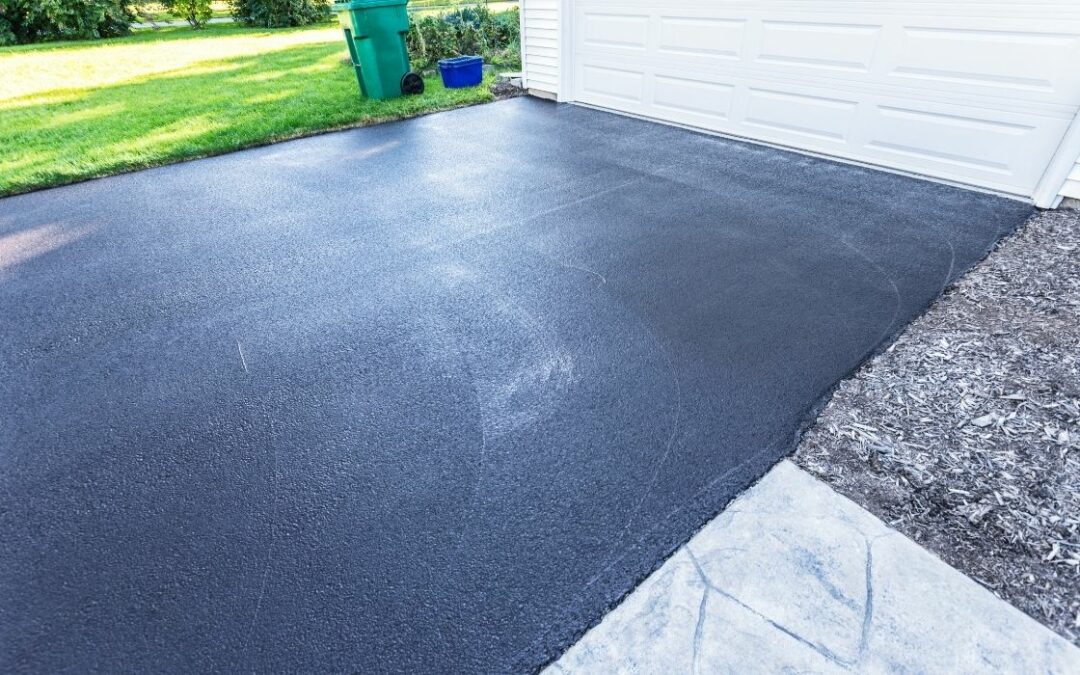Transform Your Residential or commercial property's Appearances: Commercial Parking Lot Paving and Asphalt Sealing Solutions
Transform Your Residential or commercial property's Appearances: Commercial Parking Lot Paving and Asphalt Sealing Solutions
Blog Article
Warm Mix Asphalt: A Lasting Option for Pavement
Warm Mix Asphalt (HMA) has actually emerged as a leading lasting option for pavement solutions, supplying a myriad of innovative technologies and ecological benefits. As the need for eco-friendly construction methods grows, checking out the nuances of HMA's sustainability can provide beneficial insights right into the future of pavement options.
Environmental Benefits of Hot Mix Asphalt
Moreover, Hot Mix Asphalt aids to alleviate urban warm island effects. Its dark color takes in sunshine, minimizing the quantity of heat reflected back right into the atmosphere compared to lighter-colored pavements. This can lower ambient temperature levels in urban areas, reducing the demand for a/c and inevitably minimizing energy usage.
Furthermore, Hot Mix Asphalt contributes to boosted stormwater management. Its porous nature allows water to charge and infiltrate the sidewalk groundwater products, decreasing overflow and the danger of flooding. These ecological advantages make Warm Mix Asphalt a sustainable option for paving highways and roads.
Power Performance in HMA Manufacturing
Is energy effectiveness a vital element in the manufacturing of Warm Mix Asphalt (HMA)? Power plays a significant duty in the production of HMA, impacting both price and environmental sustainability. One vital facet of energy efficiency in HMA manufacturing is the use of cozy mix asphalt (WMA) technologies.
Furthermore, innovations in plant modern technologies have brought about more energy-efficient HMA manufacturing processes. Modern plants are designed with functions like recycled asphalt pavement (RAP) handling capabilities, effective burner systems, and boosted insulation, all contributing to power savings. By enhancing energy usage in HMA manufacturing, the industry can reduce its carbon footprint while preserving premium pavement products. Power effectiveness is, consequently, a vital consideration in making certain the sustainability of Hot Mix Asphalt manufacturing.
Recyclability of Hot Mix Asphalt
The recyclability of Warm Mix Asphalt (HMA) is a pivotal facet of its sustainability and long-term environmental influence. HMA is just one of the most recycled materials in the USA, with over 100 million lots of redeemed asphalt sidewalk (RAP) being reused yearly in new pavement building. Reusing HMA supplies numerous ecological advantages, such as lowering the demand for virgin products, lowering energy consumption throughout manufacturing, and decreasing the amount of waste sent to landfills.
The process of reusing HMA entails crushing the existing sidewalk, squashing it right into smaller sized items, and blending it with new aggregate and asphalt binder to create a recycled mix. This recycled mix can frequently do in addition to or perhaps far better than standard HMA, while calling for less resources and producing lower greenhouse gas emissions. By incorporating RAP right into brand-new pavement tasks, road firms can preserve natural deposits, decrease expenses, and minimize the environmental impact of roadway building and upkeep over here activities. Overall, the recyclability of HMA plays a significant role in promoting lasting practices within the sidewalk sector.

Long-Term Efficiency of HMA
Asphalt sidewalks demonstrate sturdiness and strength over an extensive duration, mirroring the lasting efficiency of Warm Mix Asphalt (HMA) The long life of HMA can be credited to its ability to withstand rush Recommended Reading hour tons, rough weather, and the impacts of aging. Studies have shown that well-designed and correctly constructed HMA pavements can last for two decades or even more with routine maintenance. The key to optimizing the long-lasting performance of HMA depends on using high-quality products, complying with finest practices in construction, and executing effective upkeep approaches. Appropriate drainage, routine assessments, and prompt repair work are important for preserving the architectural integrity of HMA pavements gradually. Additionally, advancements in HMA innovation, such as using polymer-modified binders and warm mix asphalt, have actually better boosted the toughness and durability of HMA sidewalks. By prioritizing quality building and construction and maintenance practices, HMA proceeds to show itself as a lasting and affordable service for lasting pavement facilities.

HMA: Longevity and Sustainability
Showing both resilience and sustainability, address Warm Mix Asphalt (HMA) has become a keystone in the building of durable pavement frameworks - regrading. HMA's sturdiness stems from its capacity to endure hefty loads, extreme weather problems, and high web traffic quantities, making it a reputable selection for streets, freeways, and airport paths. The structure of HMA, which commonly includes accumulations, binder, and filler, plays a crucial function in boosting its longevity and resistance to tear and wear
Furthermore, HMA's sustainability depends on its recyclability and energy-efficient manufacturing process. The capability to recycle reclaimed asphalt sidewalk (RAP) in brand-new HMA mixtures decreases the demand for virgin products and decreases the environmental impact of pavement building and upkeep. In addition, the energy efficiency of generating HMA hinges on its lower mixing temperature levels contrasted to various other sidewalk materials, resulting in minimized power intake and greenhouse gas exhausts.
Conclusion
In final thought, hot mix asphalt (HMA) offers a lasting remedy for pavement with its environmentally pleasant attributes. HMA's recyclability, energy performance in production, and lasting longevity make it an environment-friendly option for road building and construction.
HMA is one of the most recycled materials in the United States, with over 100 million bunches of redeemed asphalt pavement (RAP) being recycled yearly in new sidewalk construction.The process of reusing HMA involves grating the existing pavement, squashing it into smaller sized pieces, and mixing it with new accumulation and asphalt binder to produce a recycled mix.Asphalt sidewalks demonstrate durability and durability over a prolonged duration, showing the lasting performance of Warm Mix Asphalt (HMA) Additionally, innovations in HMA innovation, such as the usage of polymer-modified binders and warm mix asphalt, have actually further enhanced the toughness and longevity of HMA sidewalks. The capability to recycle reclaimed asphalt sidewalk (RAP) in brand-new HMA mixes lowers the need for virgin products and reduces the ecological influence of pavement building and upkeep.
Report this page